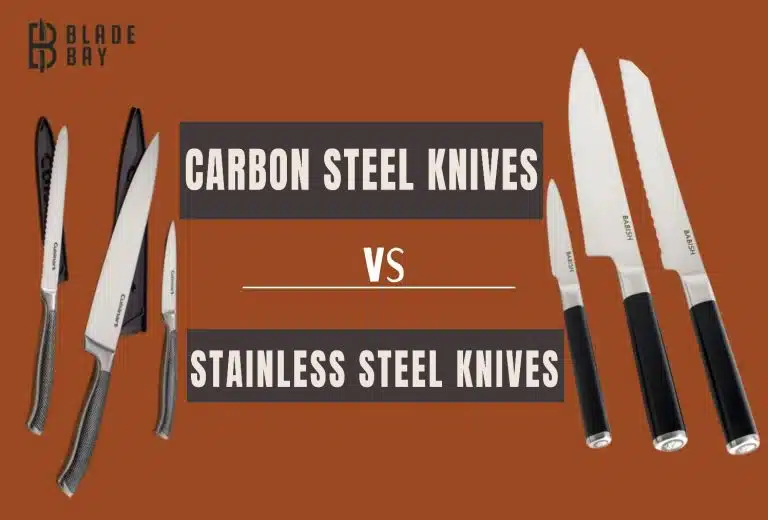Single Bevel vs Double Bevel Kitchen knife - Fully Explained
Table of Contents
ToggleSingle Bevel vs Double Bevel Kitchen knife - Fully Explained
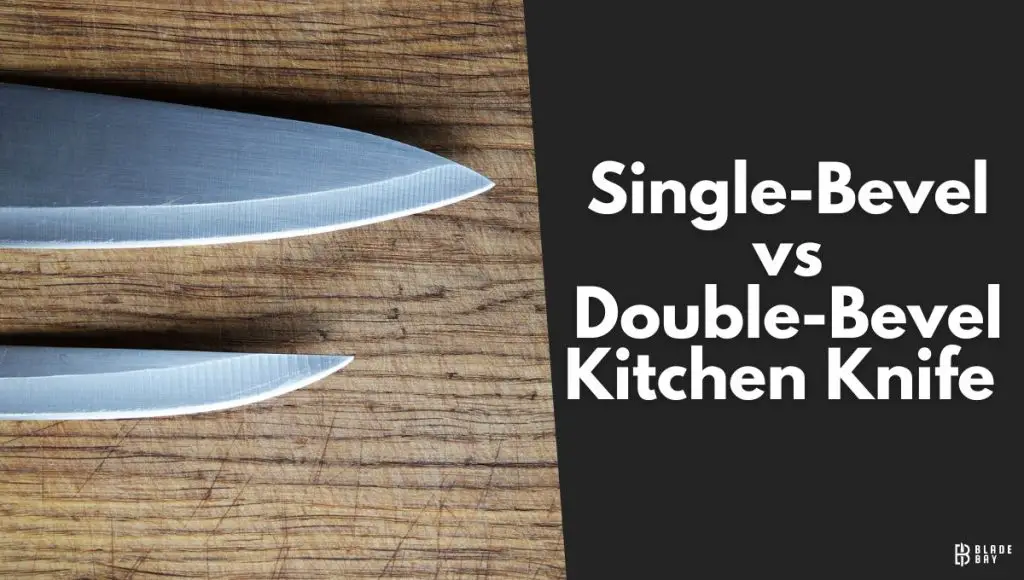
So, you are an aspiring chef or simply a knife enthusiast who wants to clear things out about single-bevel vs. double-bevel kitchen knives. Describing and understanding the various types of bevels on a knife is one of the crucial aspects of any knife design.
You may already know that the knife’s bevel refers to the surface that slopes away from the blade’s body to the edge’s cutting surface. It’s a result of the grinding process, and the position of the bevel determines whether the knife is a single or double bevel.
But wait, there’s more! Different angles and factors can impact the sharpness of your knife, making it challenging to compare single-bevel and double-bevel knives. In this article, we’ll delve into all of these aspects to give you a clear understanding of the core differences between single-bevel and double-bevel knives. We’ll also provide insight on which one to choose, along with other interesting facts to satisfy your curiosity.
So, are you ready to become a knife connoisseur? Let’s dive in!
Single Bevel knife – What’s it about?
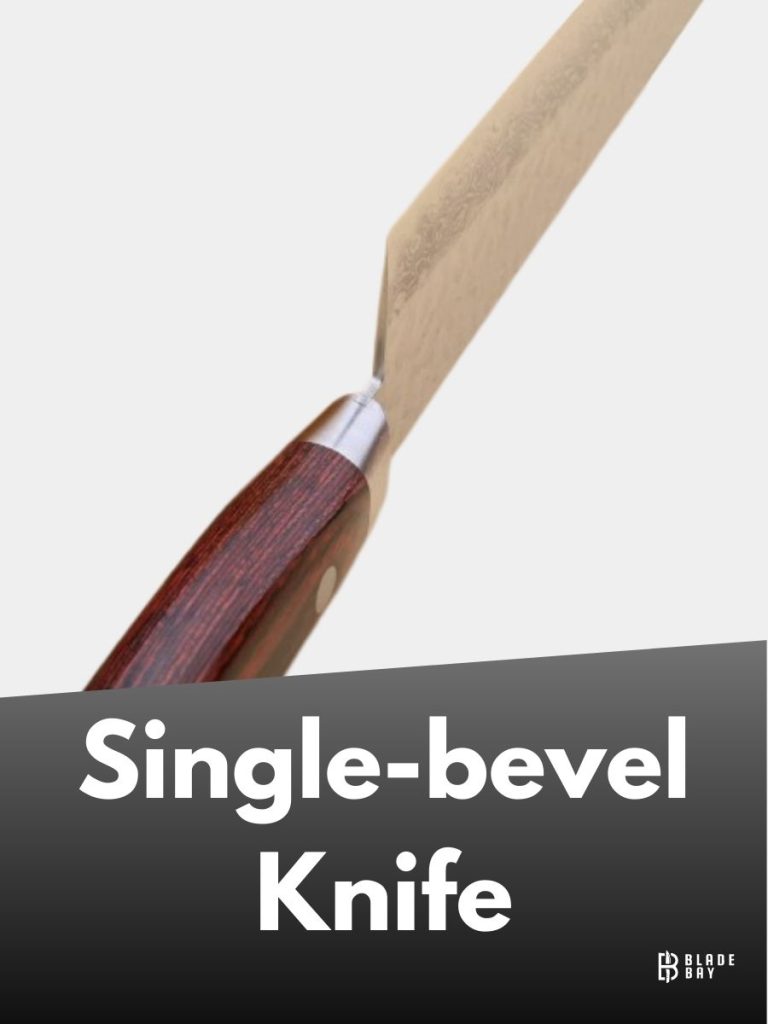
First, let’s define what a single-bevel knife is more elaborately. In short, single-bevel knives have a flat side on one side and a beveled edge on the other. There are reasons for this type of bevel design. For example, the flat side of the blade can be used for tasks such as chopping and mincing, while the beveled side is ideal for slicing and carving. It makes single-bevel knives a good option for a variety of cooking styles and techniques.
However, it’s important to note that single-bevel knives require a bit more skill and practice to use effectively. The asymmetrical design means the knife must be held at a specific angle to achieve the desired cut. With practice, you can become a pro at using a single-bevel knife.
Pros
- Precise Cutting: Single bevel knives are designed to cut with precision, making them perfect for tasks like slicing and carving.
- Versatile: These knives have a flat side and a beveled side, making them ideal for a variety of cooking techniques.
- Superior Edge Retention: The asymmetrical design of single-bevel knives allows them to hold their edge longer than other types of knives.
- Excellent for Japanese cuisine: Single-bevel knives are commonly used in Japanese cuisine due to their precision and the fact that many traditional Japanese dishes require thin and delicate cuts.
Cons:
- Challenging to Use: The asymmetrical design of a single bevel knife requires a specific technique to use effectively, which can take time and practice to master.
- Expensive: Single-bevel knives are typically more expensive than other knife types due to their specialized design and high-quality materials.
- Limited Usage: While single-bevel knives are versatile, they may not be suitable for certain tasks, such as chopping through hard materials like bones.
- Maintenance: These knives require regular sharpening and maintenance to ensure the flat side and beveled side remain properly aligned and sharp.
Double Bevel Knife – What’s it about?
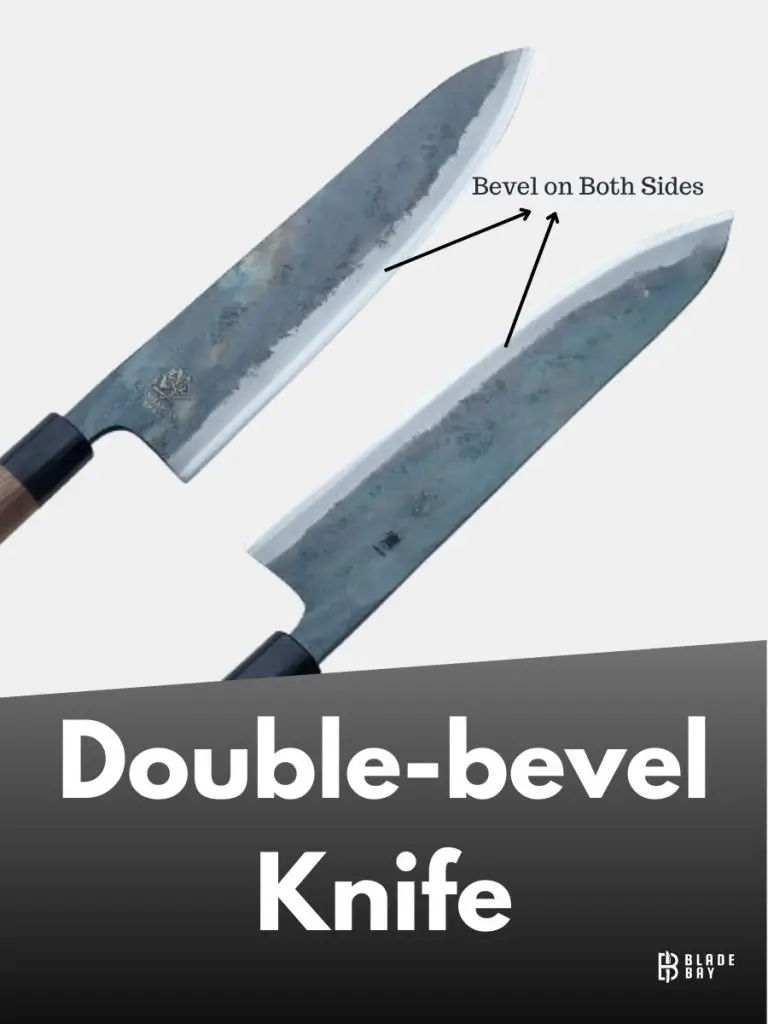
Double bevel knives, also known as Western-style knives, are the most commonly used type of knife in Western cuisine. These knives have a symmetrical bevel on both sides of the blade, making them easier to use for many people. The flatter blade of a double-bevel knife generates less friction while cutting through food. It’s why double-bevel knives are better for slicing and carving meats.
Pros:
- Versatility: Double bevel knives are suitable for a wide range of tasks in the kitchen, from chopping to slicing and dicing.
- Accessibility: The symmetrical bevel on both sides of the blade makes it easier to use and handle.
- Durability: Double bevel knives are generally made from durable materials that can withstand frequent use and last many years.
- Affordability: Double-bevel knives tend to be more affordable than other types of knives, such as single-bevel or ceramic knives.
Cons:
- Lack of precision: Double-bevel knives may not be as precise as other types of knives, such as single-bevel knives.
- Need for frequent sharpening: Double bevel knives may require more frequent sharpening than other knife kinds, as both sides of the blade are used for cutting.
- Limited cutting angle: The symmetrical bevel of double-bevel knives limits the cutting angle and may not be suitable for certain cutting techniques.
- Less control: Due to the symmetrical design, double-bevel knives may offer less control over other types of knives when performing delicate tasks.
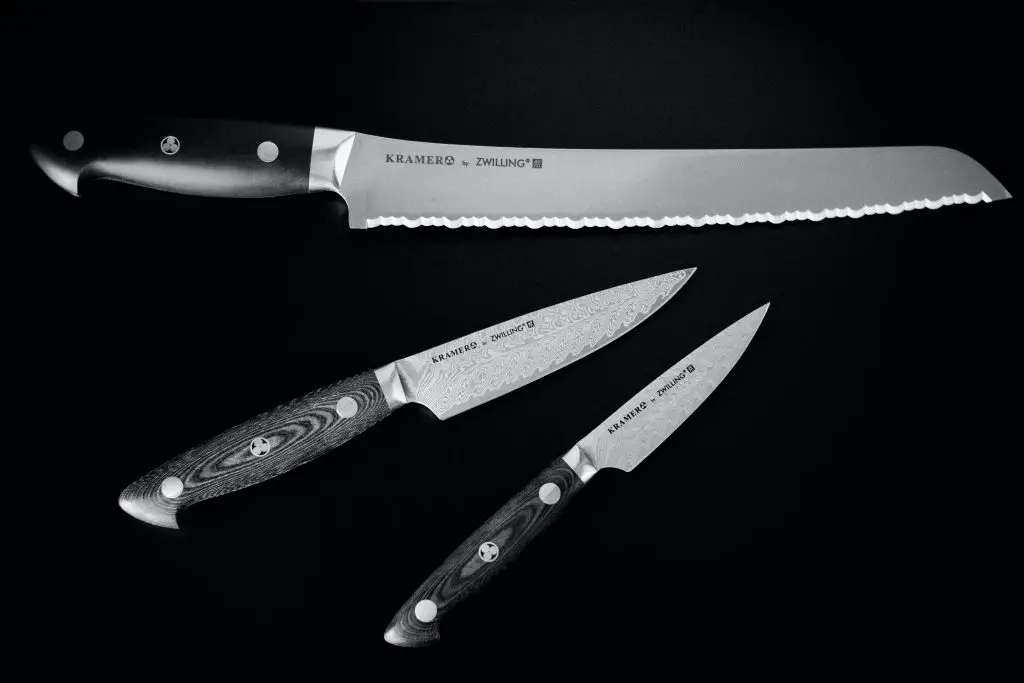
The Key Differences – Single Bevel vs Double Bevel Kitchen Knife
Now, let’s summarize the key differences between single bevel vs. double bevel kitchen knife with a quick comparison chart –
Factors | Single-Bevel | Double-Bevel |
Cutting Performance | Ideal for precise cuts, perfect for Japanese-style knives | Suitable for a wider range of cutting techniques, but may not offer the same level of precision |
Sharpening | Requires a specific sharpening technique and may be more difficult to sharpen than double bevel knives | Easier to sharpen due to the symmetrical blade design |
Control | Offers more control for delicate tasks and may be preferred by professional chefs | May offer less control than single bevel knives due to the symmetrical blade design |
Price | Often more expensive due to the specialized production process and high-quality materials used | Generally, more affordable than single bevel knives due to the simpler production process |
Cutting Angle | Offers a wider range of cutting angles and may be more suitable for certain cutting techniques | Cutting angle is limited due to the symmetrical blade design |
Durability | The single bevel design can be more fragile and prone to chipping if used improperly | The symmetrical blade design may offer more durability and resistance to damage |
Style | Known for their traditional Japanese style and aesthetic, often favored by sushi chefs | Offer a more versatile design and can come in a variety of styles and aesthetics |
Versatility | Best suited for specific tasks, such as slicing fish or vegetables, but may not be as versatile for other cutting techniques | More versatile and can be used for a wider range of cutting tasks |
Learning Curve | May require more skill and practice to use effectively due to the specialized design | Easier to use for beginners due to the symmetrical blade design |
What about Sharpening a Single Bevel and Double Bevel knife?
Sharpening a single-bevel knife often is crucial to maintain the sharp edge of the blade. To achieve that razor-sharp edge that’s essential for such precise cuts with a single bevel knife, you’ll want to sharpen the blade at an angle of around 15-17 degrees. When sharpening a single bevel knife, the bevel side of the blade will require the most attention, while the flat side will only need to be addressed in the final stages of the sharpening process.
Sharpening a single-bevel knife properly is not always an easy task compared to a double-beveled knife. It takes time, patience, and plenty of practice to master the technique – especially if you’re using a whetstone, which is widely regarded as the superior sharpening method. But trust us – once you’ve perfected your sharpening skills, you’ll be slicing and dicing with the utmost precision and finesse.
Sharpening a double bevel knife is a breeze compared to its single-bevel counterpart. The edge geometry of these knives makes it easier to sharpen them without worrying too much about precision.
Although there are variations in how to sharpen a double-bevel knife, the classic method is to use a 50/50 micro-bevel. This method involves creating a sharp edge with identical angles on both sides of the blade, placing the sharp edge at the center of the steel under the spine of the knife. However, in some cases, it’s possible and recommended to use a 30/70 split between the angles. This technique aims to replicate a single bevel knife’s edge, and it’s believed that a knife sharpened using this method will be sharper than one with a 50/50 split. You can use either a sharpener or a whetstone to carry out the sharpening process.
Know Top Brands for Single Bevel and Double Bevel Knives
Now, there are several knife brands that produce both single-bevel and double bevel kitchen knives with delicacy. Here is a quick look at the overall best knife brands separated according to the single and double bevel knife types.
For Single Bevel Knives:
- Yoshihiro: Offers traditional Japanese knives including deba, yanagi, and usuba
- Shun: Specializes in Japanese-style knives such as yanagi and deba
- Sakai Takayuki: Offers a wide range of Japanese-style knives including yanagi, deba, and usuba
- Masamoto: A well-known Japanese knife brand with a range of single-bevel knives including yanagi and usuba
For Double Bevel Knives:
- Wusthof: Offers a wide range of double-bevel knives including chef’s knives, paring knives, and utility knives
- Zwilling J.A. Henckels: A German brand with a range of double-bevel knives including chef’s knives and santoku knives
- Global: Offers a range of double-bevel knives with unique designs and excellent balance
- Victorinox: A Swiss brand with a range of double-bevel knives including chef’s knives and paring knives
Side Note: When choosing a knife brand, it is crucial to consider factors such as your personal preferences, budget, and the types of knives you need for your kitchen. It is also important to learn about the quality and craftsmanship of the knives, as well as the reputation of the brand.
Single Bevel vs Double Bevel Kitchen knife – Which One to Choose?

When it comes to choosing between a single-bevel or double bevel knife, it ultimately depends on your personal preferences and needs. Single-bevel knives are preferred by professionals and experienced chefs who require precision cutting for specific tasks, such as preparing sushi or sashimi. They offer a finer edge and more delicate control but require more practice and skill to sharpen properly.
On the other hand, double-bevel knives are more versatile and easier to use for everyday tasks in the kitchen. They offer a wider range of cutting angles and are less delicate, making them suitable for chopping, slicing, and mincing a variety of ingredients.
When deciding which one to choose, consider your level of experience and the tasks you plan to use the knife for. If you are an experienced chef or need a knife for specific tasks, a single-level knife may be the better choice. If you are a home cook looking for a versatile knife for everyday use, a double-bevel knife should be a better fit. Regardless of your choice, always invest in a high-quality knife that is comfortable to handle and made from durable materials.
FAQs
1.What is a double bevel cut?
Ans: A double bevel cut refers to a cutting technique where the blade is angled on both sides, creating a V-shaped edge. This is commonly found in double bevel knives.
2.Are Global knives single or double bevel?
Ans: Global knives are double bevel knives. They are made with a symmetric edge bevel that tapers from the spine to the cutting edge on both sides of the blade.
3.How to use a single bevel knife?
Ans: When using a single bevel knife, it is important to hold the knife at the correct angle to maintain the sharpness of the blade. Use the flat side of the blade as a guide against the cutting board and make sure to cut with a slicing motion. Practice proper sharpening techniques to keep the blade in optimal condition.


